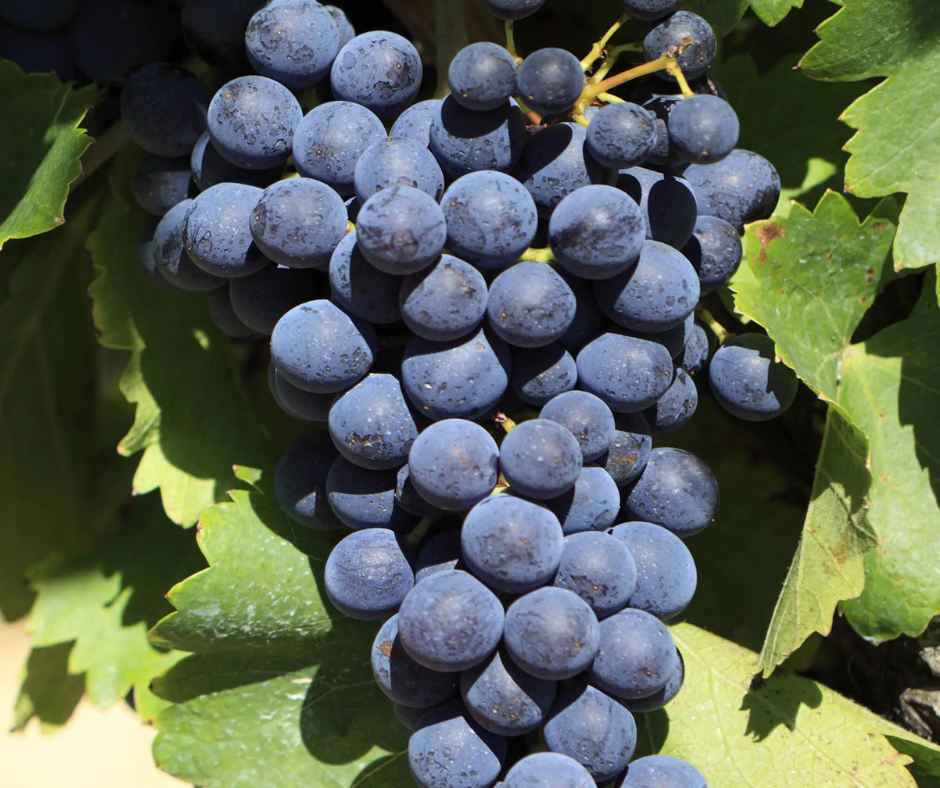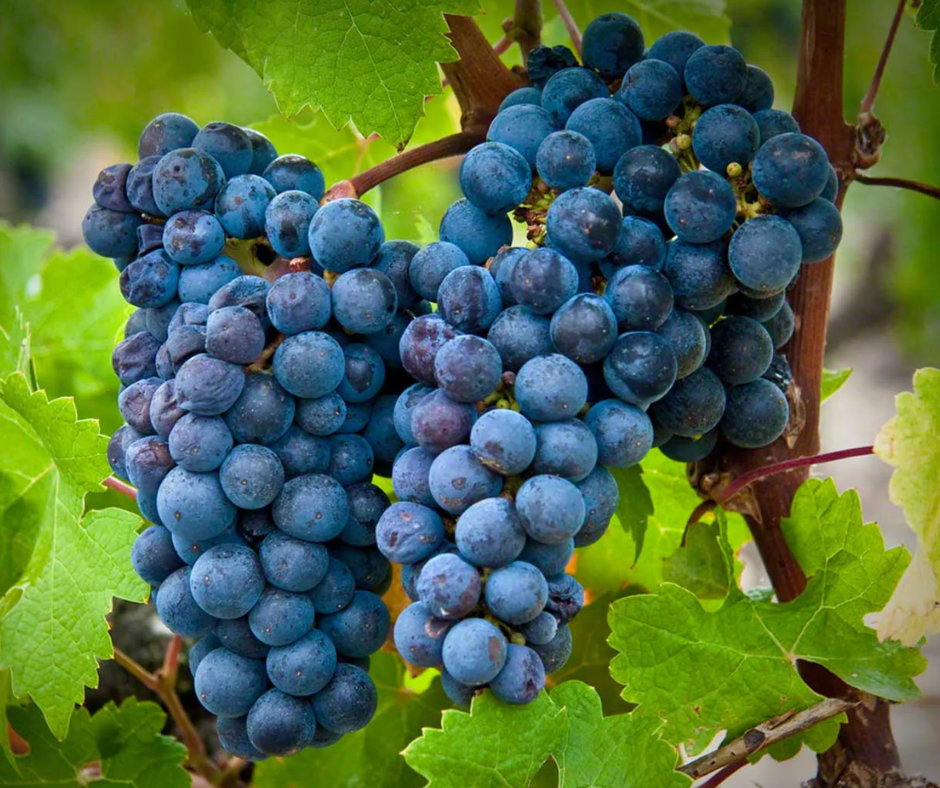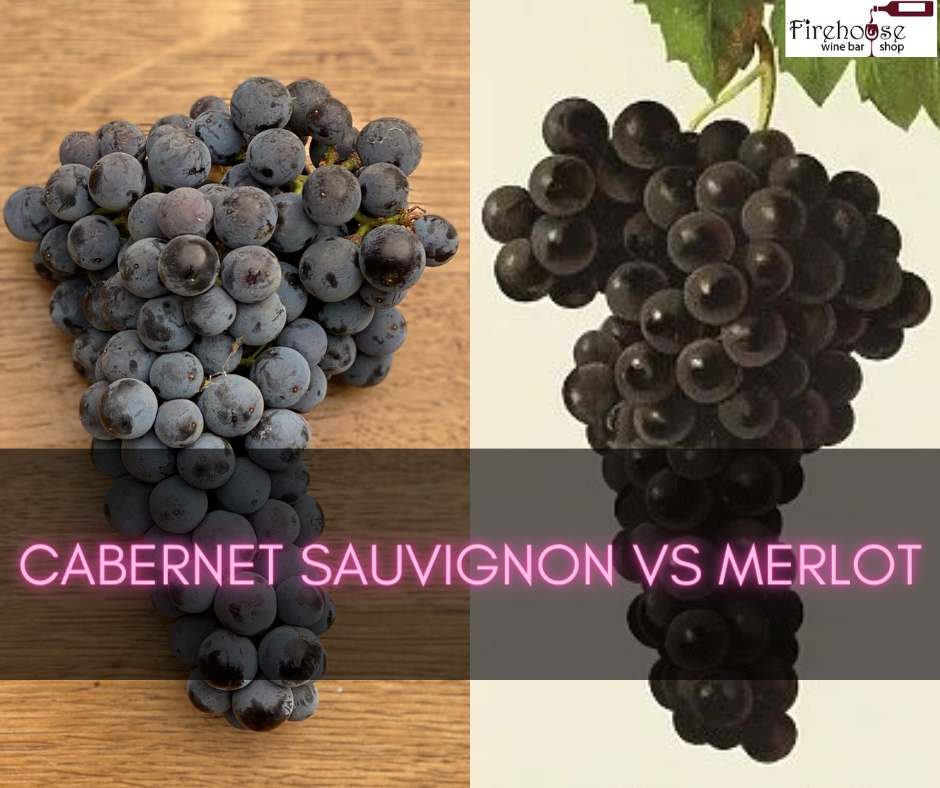Introduction
For wine enthusiasts and newcomers to the world of fine wines, the debate of Cabernet Sauvignon vs Merlot has long been a topic of discussion. Both of these red grape varieties have their unique characteristics and flavors, making them popular choices for wine lovers around the world.
Welcome To The Cabernet Sauvignon Vs Merlot Showdown
In the red wine world, Cabernet Sauvignon and Merlot are often pitted against each other in tastings, debates, and comparisons. These two grapes are the backbone of many famous wines, and understanding their differences can greatly enhance your wine-drinking experience.
Importance Of Comparing Cabernet Sauvignon And Merlot
Comparing Cabernet Sauvignon and Merlot is important for several reasons. Here are a few key points to consider:
- Flavor Profiles: Cabernet Sauvignon is known for its bold and powerful flavors, with notes of blackcurrant, black cherry, and cedar. Conversely, Merlot is smoother and softer, with flavors of ripe plum, red berries, and chocolate. Understanding these flavor profiles can help you choose the right wine for your preferences and the occasion.
- Pairing with Food: These wines have different characteristics, so they pair differently with various types of cuisine. Cabernet Sauvignon’s higher tannins and acidity make it a great match for rich, fatty meats and dishes with strong flavors. Merlot’s softer tannins and fruit-forward profile make it a versatile pairing with various foods, including poultry, pasta, and cheese.
- Price Range: Regarding price, Cabernet Sauvignon tends to be the more expensive option. This is partly due to its reputation and higher production costs. On the other hand, Merlot is often more affordable and accessible, making it a great choice for everyday enjoyment.
By comparing Cabernet Sauvignon vs Merlot, you can expand your knowledge of wine and discover new flavors and experiences. Whether you prefer Cabernet Sauvignon’s robustness or Merlot’s smoothness, both of these grapes have their place in the world of wine. So why not embark on your grape showdown and explore the nuances of these two remarkable varieties?

Characteristics Of The Grape Varieties
Regarding wine, two grape varieties reign supreme: Cabernet Sauvignon and Merlot. Both grapes have distinct characteristics that make them popular among wine enthusiasts and aficionados. Let’s explore what sets them apart.
Cabernet Sauvignon Grape Characteristics
Cabernet Sauvignon is known for its bold and robust flavor profile. It typically has high tannins, which give the wine structure and aging potential. The wine produced from Cabernet Sauvignon grapes is often full-bodied with rich flavors of blackcurrant, black cherry, and cedar. It has a longer finish and can age beautifully for several years. Cabernet Sauvignon wines are known for their complexity and ability to pair well with various dishes, especially red meats and hard cheeses.
Merlot Grape Characteristics
Merlot, on the other hand, is known for its smooth and approachable nature. It has lower tannins than Cabernet Sauvignon, resulting in a softer mouthfeel and velvety texture. Flavors of ripe plum, blackberry, and chocolate characterize merlot wines. They are generally medium to full-bodied and have a shorter finish than Cabernet Sauvignon—merlot pairs well with various foods, including roasted chicken, pasta dishes, and soft cheeses.
Cabernet Sauvignon and Merlot have unique qualities that appeal to different palates and occasions. With its boldness and aging potential, Cabernet Sauvignon is often chosen for special occasions and cellar aging. On the other hand, Merlot’s approachability and versatility make it a popular choice for everyday enjoyment.
In conclusion, understanding the characteristics of Cabernet Sauvignon and Merlot can enhance your wine appreciation and help you make informed choices. Whether you prefer Cabernet Sauvignon’s boldness or Merlot’s smoothness, both grapes offer exceptional wine experiences worth exploring.
Production And Aging Differences
Regarding red wine, Cabernet Sauvignon and Merlot are two popular options that wine enthusiasts often debate. Both wines belong to the Bordeaux family but have distinct characteristics that set them apart. Let’s explore the production and aging differences to understand these wines better.
Aging Process Of Cabernet Sauvignon
Cabernet Sauvignon is known for its bold and intense flavor profile. This wine undergoes a longer aging process than Merlot, typically aged 18-24 months in oak barrels. The extended aging allows the wine to develop complex flavors, tannins, and aromatic compounds. The rich tannins give Cabernet Sauvignon its structure, ensuring that the wine can age gracefully for several years. This means that a well-made Cabernet Sauvignon can continue improving and evolving in the bottle.
Aging Process Of Merlot
Merlot, on the other hand, has a smoother and more approachable character compared to Cabernet Sauvignon. It undergoes a shorter aging process, typically for 12-18 months in oak barrels. The shorter aging time allows the wine to retain its fruity flavors and softer tannins, resulting in a wine ready to be enjoyed earlier. While Merlot can benefit from aging for a few years, it is generally consumed within the first 5-10 years of its release.
It’s essential to note that aging potential can vary depending on the quality of the grapes, winemaking techniques, and overall balance of the wine. Some Cabernet Sauvignons and Merlots are produced for immediate consumption and may not improve significantly with age.
In conclusion, Cabernet Sauvignon and Merlot have different aging processes contributing to their distinct flavors and characteristics. Cabernet Sauvignon has a longer aging potential, allowing for the development of complex flavors and tannins. Merlot, on the other hand, is more approachable and ready to drink at an earlier stage. Ultimately, personal preference and the occasion will determine which wine is the perfect choice for you. So, why not experiment and explore both varieties to find your favorite?

Flagship Grapes Of Bordeaux
Cabernet Sauvignon In Bordeaux
Cabernet Sauvignon is one of the flagship grape varieties of Bordeaux, France. Known for its bold and structured flavor profile, it is often considered the “king” of red wines. Cabernet Sauvignon grapes thrive in Bordeaux’s cool climate, producing wines with rich blackcurrant, blackberry, and tobacco notes. These wines are typically high in tannins, contributing to their age-worthy nature. The well-known appellations of Bordeaux, such as Pauillac, Saint-Julien, and Margaux, are famous for producing exceptional Cabernet Sauvignon-based blends.
Merlot In Bordeaux
Merlot, another flagship grape of Bordeaux, shares a close relationship with Cabernet Sauvignon. It is often described as the “gentle giant” of red grapes due to its softer and more approachable character. Merlot grapes thrive in Bordeaux’s clay-based soils and warmer microclimates, resulting in elegant, round, and fruit-forward wines. Merlot-based wines from Saint-Émilion and Pomerol have gained international acclaim for their velvety texture, ripe plum and black cherry flavors, and supple tannins.
Cabernet Sauvignon and Merlot offer distinct profiles in terms of flavor and structure. Cabernet Sauvignon wines are more full-bodied, with bold tannins and higher acidity. They often exhibit flavors of black fruits, cedar, and herbal notes. On the other hand, Merlot wines are medium to full-bodied, with softer tannins and a smoother mouthfeel. They showcase ripe red fruit flavors, such as cherry and raspberry, and hints of chocolate and spice.
Cabernet Sauvignon and Merlot play important roles in Bordeaux’s winemaking, offering different qualities that complement each other when blended. Cabernet Sauvignon provides structure, depth, and aging potential, while Merlot contributes richness, fruitiness, and approachability. The art of blending these two grapes allows winemakers to create wines of tremendous complexity and balance.
Overall, whether you are a fan of the bold and powerful Cabernet Sauvignon or the softer and more approachable Merlot, exploring the wines from Bordeaux will undoubtedly provide you with an exceptional tasting experience.
Wine And Food Pairing
For wine enthusiasts and food lovers alike, the quest for the perfect wine and food pairing is an ongoing adventure. One common debate in the world of wine is the comparison of Cabernet Sauvignon and Merlot. Both red wines are beloved by many, but what sets them apart when pairing them with food? Let’s find out!
Pairing With Cabernet Sauvignon
Cabernet Sauvignon is known for its bold and powerful flavors. It pairs exceptionally well with hearty and rich dishes. Here are some food options that complement the characteristics of Cabernet Sauvignon:
- Red Meat: Cabernet Sauvignon’s robust tannins and high acidity make it the perfect companion for red meat dishes like steaks and roasts. The wine’s intense flavors help cut through the meat’s richness, creating a harmonious balance.
- Strong Cheese: Cabernet Sauvignon pairs well with strong and aged cheeses like Cheddar, Gouda, or Blue cheese. The wine’s structure and firm tannins stand up to the robust flavors of these cheeses, enhancing the overall tasting experience.
Pairing With Merlot
Merlot is known for its smooth and approachable characteristics. It is often described as having flavors of ripe fruits and a velvety texture. Here are some food options that pair well with Merlot:
- Poultry: Merlot’s softer tannins and medium body make it an excellent choice to pair with poultry dishes like roasted chicken or turkey. The wine’s fruity flavors complement the lighter flavors of the poultry, creating a delightful combination.
- Pasta: Merlot pairs well with pasta dishes, especially those with tomato-based sauces or creamy white sauces. The wine’s acidity and fruit-forward flavors elevate the flavors of the pasta, creating a well-rounded and satisfying pairing.
In conclusion, Cabernet Sauvignon and Merlot have unique characteristics that make them enjoyable in their own right. When pairing them with food, consider the flavor profile and intensity of the wine and choose dishes that complement and enhance those characteristics. Cheers to a fantastic wine and food pairing experience!

Key Similarities And Differences
Similarities Between Cabernet Sauvignon And Merlot
Cabernet Sauvignon and Merlot might be two distinct grape varieties, but they also share some similarities in their characteristics, growing conditions, and popularity among wine enthusiasts.
- Growing regions: Cabernet Sauvignon and Merlot thrive in similar climates, with popular regions including Bordeaux in France, California in the United States, and Coonawarra in Australia.
- Red wine: Both varieties are red grapes, which means they contribute to producing red wines with rich color, body, and flavors.
- Blending potential: Cabernet Sauvignon and Merlot often blend, complementing each other’s qualities. Cabernet Sauvignon brings structure, tannins, and aging potential, while Merlot adds softness, fruitiness, and approachability.
Differences Between Cabernet Sauvignon And Merlot
When you compare Cabernet Sauvignon and Merlot, they also have distinct characteristics that set them apart.
- Flavor profiles: Cabernet Sauvignon typically offers flavors of blackcurrant, blackberry, and cedar, with pronounced tannins and a fuller-bodied taste. Conversely, Merlot tends to be softer and fruitier, often with notes of cherry, plum, and chocolate.
- Tannin levels: Cabernet Sauvignon grapes have higher tannin levels than Merlot, resulting in a more structured and firm mouthfeel.
- Aging potential: Cabernet Sauvignon wines generally have a higher aging potential due to their higher tannin and acidity levels, allowing them to develop complex flavors over time. Merlot wines are typically more approachable when young and may require less aging.
- Food pairings: Cabernet Sauvignon pairs well with hearty dishes such as grilled steak, lamb, or rich sauces. With its softer tannins, Merlot is a versatile food wine that can be enjoyed with roasted chicken, pasta dishes, or even cheese.
In summary, while Cabernet Sauvignon and Merlot share some similarities in growing regions and popularity, they also offer distinct flavor profiles, tannin levels, aging potential, and food pairing options. Exploring both varieties will give wine enthusiasts a diverse and enjoyable tasting experience.
FAQ: Cabernet Sauvignon vs Merlot – Grape Showdown: Comparing Cabernet Sauvignon and Merlot
Q: Where do Cabernet Sauvignon and Merlot originate from?
A: Both Cabernet Sauvignon and Merlot have their origins in Bordeaux, France. It is believed that they share the same parent grape, Cabernet Franc.
Q: How do Cabernet Sauvignon and Merlot differ in terms of characteristics?
A: Cabernet Sauvignon is known for its bold and structured nature, offering a robust and powerful flavor profile. On the other hand, Merlot is smoother and more approachable, with a more medium-bodied character.
Q: Can you provide a brief overview of the flavor profiles of Cabernet Sauvignon and Merlot?
A: Cabernet Sauvignon is often described as having flavors of blackcurrant, black cherry, cedar, and sometimes hints of herbs. Merlot, on the other hand, offers notes of red fruits like cherry and plum, with a touch of chocolate and sometimes even floral undertones.
Q: Are there any notable differences in the production methods of Cabernet Sauvignon and Merlot?
A: The production methods for both wines are quite similar, involving the fermentation of the grapes and aging in oak barrels. However, one key difference is that Cabernet Sauvignon generally requires a longer aging process to soften its strong tannins, while Merlot is often ready to be enjoyed at a younger age.
Q: Which wine would be recommended for those seeking a more robust and powerful red wine?
A: If you are looking for a more robust and powerful red wine, Cabernet Sauvignon would be the recommended choice.
Q: Which wine would be recommended for those seeking a smoother and more approachable red wine?
A: For those seeking a smoother and more approachable red wine, Merlot would be the suggested option.
Q: What are some popular dishes that pair well with Cabernet Sauvignon and Merlot?
A: Cabernet Sauvignon pairs well with rich, hearty dishes like steak, lamb, and aged cheeses. Merlot, on the other hand, complements dishes such as roasted chicken, pasta with red sauce, and soft cheeses.
Q: Are there any notable differences in price between Cabernet Sauvignon and Merlot?
A: The price of wines can vary greatly depending on the region, brand, and quality. However, in general, Cabernet Sauvignon tends to be more expensive than Merlot due to its longer aging process and often higher reputation.
Q: Can you summarize the key differences between Cabernet Sauvignon and Merlot?
A: In summary, Cabernet Sauvignon is known for its robustness, powerful structure, and flavors of blackcurrant and cedar. Merlot, on the other hand, offers a smoother, medium-bodied experience with notes of red fruits and hints of chocolate.
Conclusion
After comparing Cabernet Sauvignon vs Merlot, it’s clear that these grape varieties have unique characteristics and qualities. Cabernet Sauvignon is known for its boldness, intensity, and aging potential, while Merlot offers a softer, approachable, and fruit-forward profile. The choice between the two ultimately comes down to personal preference and the specific occasion or meal.
Recap Of The Cabernet Sauvignon Vs Merlot Comparison
Here’s a quick recap of the main differences between Cabernet Sauvignon and Merlot:
- Flavor and Tannins: Cabernet Sauvignon tends to have a more robust flavor profile with higher tannin levels, resulting in a drier and more astringent taste. On the other hand, Merlot offers a smoother, softer, and fruitier flavor profile with lower tannin levels.
- Aging Potential: Cabernet Sauvignon has excellent aging potential and can develop complex flavors and aromas over time. Merlot also has aging potential but is generally consumed at a younger age when its fruity characteristics are more pronounced.
- Food Pairing: Cabernet Sauvignon pairs well with rich, bold dishes such as steak, lamb, and aged cheese. Merlot is more versatile and can be paired with a wider range of foods, including roasted chicken, pasta, and even chocolate desserts.
Final Thoughts On Choosing Between The Two Varieties
When choosing between Cabernet Sauvignon and Merlot, consider your preferences for flavor intensity, tannin levels, and aging potential. If you prefer bold and robust wines with higher tannins, go for Cabernet Sauvignon. If you prefer a smoother, fruit-forward wine that is approachable in its youth, go for Merlot. It’s also worth experimenting by trying both varieties to discover your preferences and explore the diversity of flavors these two popular red grapes offer.
Remember, the world of wine is vast and full of options, so don’t be afraid to explore and try new things. Whether you choose Cabernet Sauvignon or Merlot, enjoy the journey of discovering and savoring the wonderful world of wine. Cheers!

Andre Lotz immigrated to the United States from South Africa almost 20 years ago. Still, he didn’t feel truly at home until he settled in Mobile—a city that reminds him of his childhood home of Fish Hoek on the southern cape of Africa.

